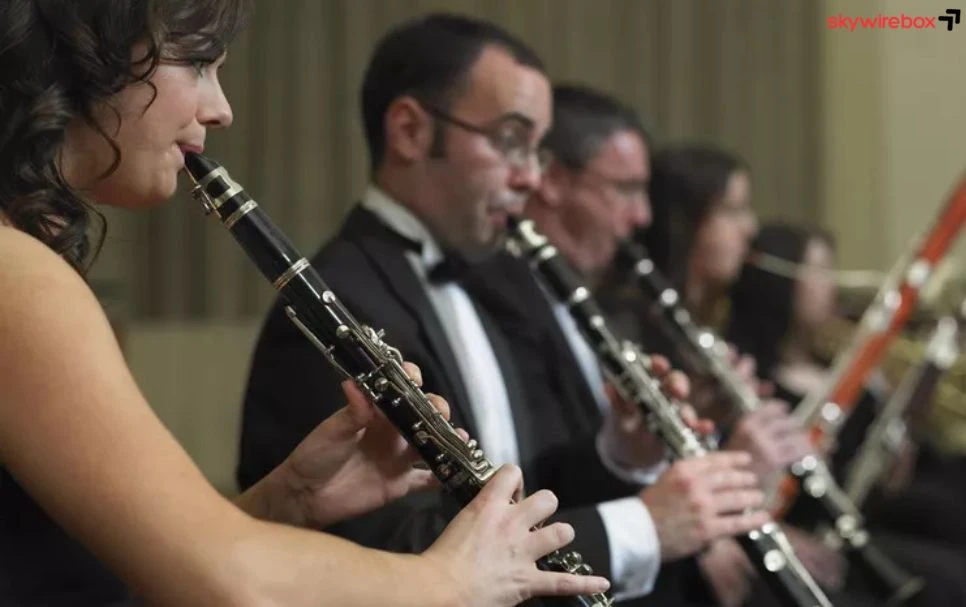Have you ever been drawn to the warm, rich sound of a clarinet? Whether you’re a music lover, a beginner looking for an instrument to start with, or someone curious about adding a new skill, the clarinet might just be the perfect fit for you.
This versatile woodwind instrument can express a wide range of emotions, from bright and cheerful to deep and soulful. You’ll discover what makes the clarinet unique, how it works, and why so many people choose it for their musical journey.
Get ready to unlock the secrets behind the clarinet and find out how it can bring music to life in your hands.
Clarinet Basics
The clarinet has several important parts. The mouthpieceholds the reed, which vibrates to make sound. The barrelconnects the mouthpiece to the body. The bodyhas many holes and keys to change notes. The bellhelps the sound come out clearly.
There are different types of clarinets. The most common is the Bb clarinet, used in bands and orchestras. The A clarinetsounds a bit lower and is often used in classical music. The bass clarinetis larger and sounds much deeper. Other types include the altoand piccolo clarinet.
Choosing the right clarinet depends on skill level and music style. Beginners usually start with a Bb clarinet. More advanced players may prefer different sizes or brands. Comfort and sound quality are key. Try different clarinets before deciding.
Essential Playing Techniques
Sitting straighthelps you play the clarinet with ease. Keep your back upright and feet flat on the floor. Hold the clarinet at a slight angle, not too high or low. Your left hand should cover the top keys, and your right hand the bottom keys. Fingers must be curved, not flat, to press keys well.
Breath control is very important. Take deep, calm breaths from your belly, not your chest. The embouchuremeans how you shape your mouth on the mouthpiece. Keep your lips firm but relaxed. The reed should vibrate freely to make a clear sound.
Learn the finger positionsfor each note carefully. Practice moving fingers fast and cleanly. Use both hands together to play notes smoothly. Good finger work makes your music sound nice and clear.
Reed Selection And Care
Reedscome in various typeslike soft, medium, and hard. Soft reeds are easier to play but may wear out faster. Hard reeds last longer but need more breath. Choose a reed that fits your skill level and sound preference.
Reeds must fit the mouthpiece properly. A reed too tight or loose affects the sound. Use a reed knife or sandpaper to adjustits tip carefully. Testing different reeds helps find the best match.
Keep reeds cleanand dry after use. Wipe them gently with a soft cloth. Store reeds in a reed case to avoid warping. Replace reeds regularly to maintain a clear and strong sound.
Practice Tips
Setting clear practice goalshelps focus your time on important skills. Aim to improve one or two things each session. Small goals like playing a scale cleanly or holding a note steady work well.
Effective warm-upsprepare your muscles and mind. Start with simple breathing exercises and long tones. This helps create a good sound and prevents injury. Gradually add scales and easy songs.
Improving tone and intonationtakes patience. Play slowly and listen carefully to each note. Use a tuner to check your pitch. Try to keep your sound smooth and even. Practice with a recording or teacher for feedback.
Common Challenges
Overcoming difficult passagesrequires slow practice and patience. Breaking complex parts into smaller sections helps. Repeating these sections many times builds confidence and skill.
Handling breath control issuesis key for smooth playing. Taking deep, steady breaths supports long notes. Learning to breathe quickly between phrases keeps sound clear and steady.
Dealing with instrument maintenancemeans keeping the clarinet clean and dry. Regularly checking pads and keys avoids leaks. Using a swab after playing removes moisture and protects the instrument.
Advanced Skills
Extended techniques help create unique soundson the clarinet. Techniques like multiphonicsand glissandoadd new textures. Players can explore flutter tonguingand key clicksto enrich their music.
Articulation styles shape the clarinet’s voice. Different methods include staccato, legato, and spiccato. Each style changes how notes start and stop, giving music more energyand expression.
Improvisation encourages creativityand personal style. It allows players to express feelingsthrough music. Experimenting with rhythms and melodies helps develop a unique soundthat stands out.
Performance Preparation
Choosing the right musicis key for good performance. Pick pieces that match your skill and interest. Practice them well to feel confident. Variety keeps both player and audience engaged.
Stage presencemeans how you act while playing. Stand tall and smile. Make eye contact with the audience. Move naturally with the music. This helps keep people interested.
Many feel nervous before playing. Take deep breaths to calm your body. Think about the joy of music, not mistakes. Practice a lot to build trust in your skills. Small breaks before performing can help relax your mind.

Frequently Asked Questions
Is the Clarinet One Of The Hardest Instruments To Play?
The clarinet is challenging due to breath control, finger coordination, and embouchure skills. It ranks moderately hard but varies by player.
Is A Clarinet Hard To Play?
Playing the clarinet can be challenging initially due to breath control and finger coordination. Practice and patience make it easier over time.
Is A Clarinet Harder Than A Flute?
The clarinet is generally harder due to complex fingerings and reed control. The flute demands strong breath control and precise embouchure. Difficulty varies by player skills and personal preference.
What Are The 11 Types Of Clarinets?
The 11 types of clarinets are: E-flat, B-flat, A, C, D, Alto, Bass, Contra-alto, Contrabass, Octave, and Piccolo clarinets. Each varies in size and pitch range.
Conclusion
The clarinet offers a rich, warm sound loved by many. It suits beginners and skilled players alike. Playing it helps improve breathing and finger coordination. Different types of clarinets fit various music styles. Whether in a band or solo, it shines bright.
Exploring this instrument brings joy and creativity. Start your clarinet journey and enjoy making music.
Read more: bari or tenor sax






